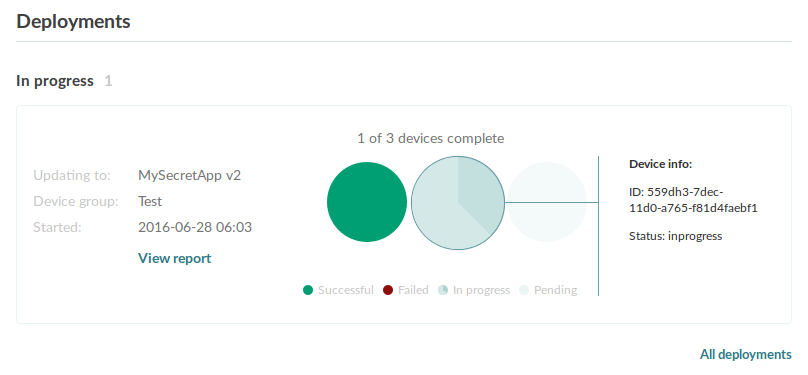The initial source code for the Mender embedded Linux updater client has been available since early 2016. Since then, the client has gone through many iterations and improvements and you can now do a deployment with it on the virtual QEMU machine, or our reference board the Beagle Bone Black, in less than 10 minutes! Follow our Getting Started guide to get up and running. It has also been integrated into many production devices, which can be done by following the device integration documentation.
Right now, we are implementing support for a new .mender file format that wil act as a wrapper around the rootfs image and allow bundling of arbitrary meta-data and supporting files. The main reason for this is to enable upcoming features to do image integrity validation with checksums, signatures, pre- and post-install scripts and more!
Progress on the Mender server
Behind the scenes (so far), we have been working on developing the Mender server. The purpose of the Mender server is to manage deployments across many embedded Linux devices, so you do not have to deploy updates manually one-by-one, as that gets old quickly! Our intention has always been to release the Mender server as open source (Apache License V2), just like the Mender client. The reason you have not seen any code or testable version of the server yet is that we wanted to ensure that it is in a testable state before publishing any sources. The good news is that the wait is just about to end!
In the coming weeks, we are releasing the Mender server for external testing by interested users (please contact us if you are interested). Shortly following this we will open the github repositories that make up the server -- which is built according to the microservices design pattern.
Initial features to expect
The initial version of the Mender server to be released will allow you to upload images and deploy to several embedded Linux devices, and it has a simple and intuitive UI to manage and report on deployments, as shown in the example below. Everything you can do with the UI is also available through a set of powerful REST APIs.

Please note that we only recommend using the initial version we make available for testing, as it will lack some important security features like user management and random generation of TLS certificates. However, we hope that you will help us make Mender better by testing the server soon!
Stay tuned for updates and remember to sign up for our newsletter!
Recent articles
Failed lifecycle management is unacceptable in FDA and MDR compliance
The struggle to reach global markets for medical device manufacturers: The importance of international compliance
The differences between the US FDA’s device approval process and the EU’s medical device regulation (MDR): An essential dual-compliance framework for global manufacturers
Learn why leading companies choose Mender
Discover how Mender empowers both you and your customers with secure and reliable over-the-air updates for IoT devices. Focus on your product, and benefit from specialized OTA expertise and best practices.



